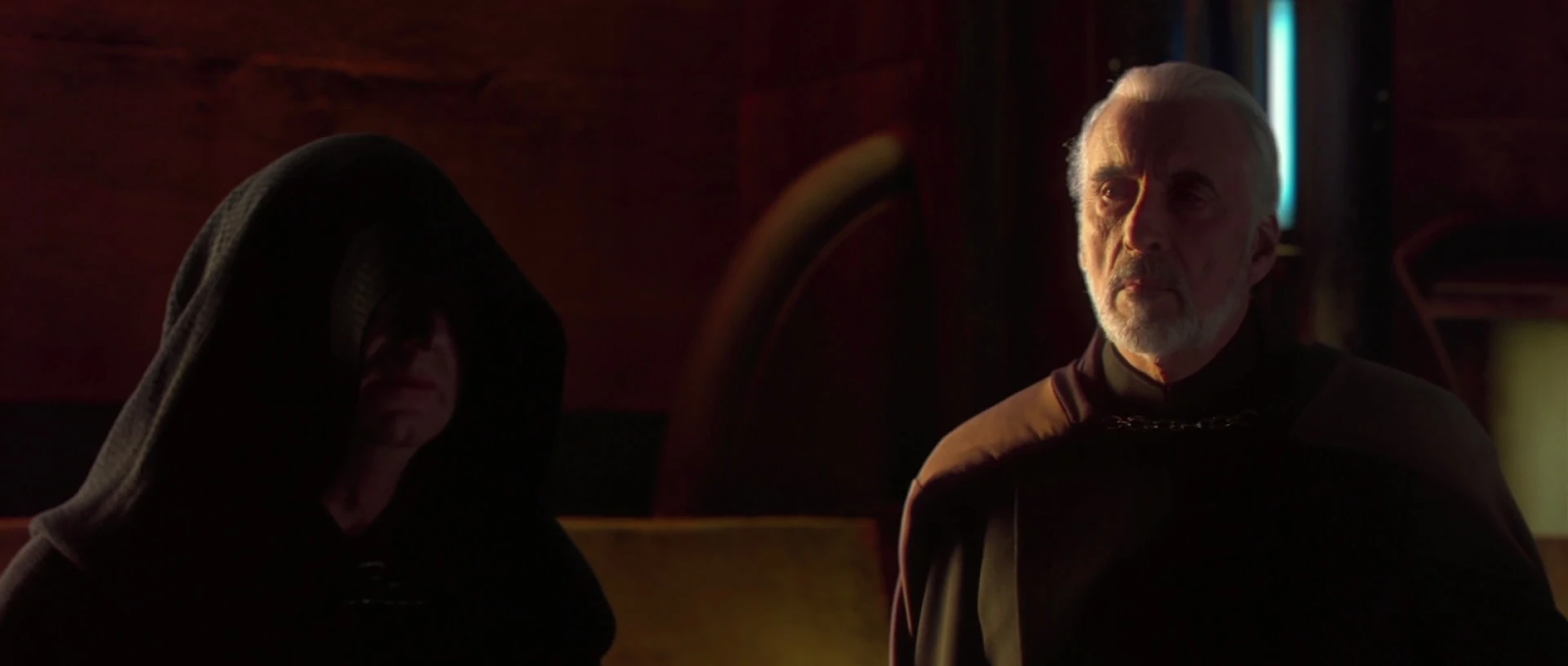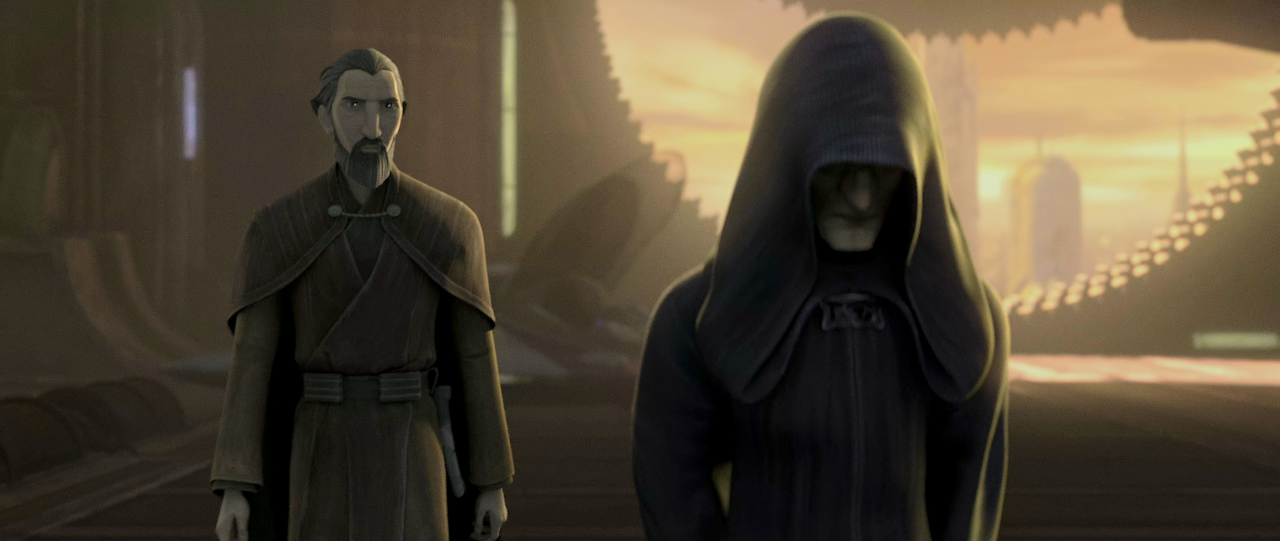Count Dooku and Darth Sidious: The Secret Alliance That Doomed the Republic
.jpg)
Count Dooku, a disillusioned Jedi Master, joined forces with Darth Sidious to secretly orchestrate the Clone Wars. Disguised as leaders of opposing sides, they engineered conflict to destabilize the Republic, manipulate the Jedi, and pave the way for the Sith Empire. Dooku’s idealism was ultimately betrayed, while Sidious seized power and wiped out the Jedi, fulfilling the Sith's ancient ambition.
Count Dooku and Darth Sidious: The Secret Alliance That Doomed the Republic
Behind the grand facade of galactic politics and the noble order of the Jedi lurked a darker, hidden alliance that shaped the fate of the Republic and the stars beyond.

This unholy pact, forged between the Sith Lords Darth Sidious and Count Dooku, operated in the shadows—disguised as Jedi leadership and political authority while pulling the strings of conflict and betrayal.
Their secret collusion deliberately manipulated the galaxy into a devastating war, using both Jedi and Separatist forces as pawns in a carefully crafted game of power.
This clandestine alliance was not merely about conquest; it was a ruthless orchestration of chaos designed to dismantle established institutions from within.
While the Republic and Jedi worked tirelessly to maintain peace, the Sith exploited their trust, accelerating the collapse of galactic order.
The Sith’s masterstroke was to engineer conflict that would justify unprecedented militarization, political upheaval, and ultimately the annihilation of the Jedi and the rise of a Sith-dominated Empire.
Count Dooku: The Fallen Jedi with Noble Intentions
Count Dooku was not born a villain but a noble Jedi Master disillusioned by the moral decay he perceived within the Jedi Council.

His disenchantment intensified after the Battle of Galidraan, where he saw the Council’s strict obedience to a corrupt Senate lead to needless bloodshed and suffering.
For Dooku, the Jedi had become tools of a failing political system rather than guardians of peace and justice. His grievances were rooted in the belief that the existing order was irreparably broken and that drastic change was necessary to restore balance.
This conviction led Dooku to embrace the dark side not for personal gain but as a means to what he initially viewed as a higher ideal.
Upon taking the Sith name Darth Tyranus under the tutelage of Darth Sidious, he sought to build a new galactic order—one where the Republic's corruption would be swept away and replaced. Yet, this transformation also entangled him deeper in Sidious’ manipulations, forcing him to serve the Sith master’s ruthless ambitions more than his own noble aspirations.
Darth Sidious: The Phantom Menace Behind the Republic
Darth Sidious embodied the ultimate shadow ruling the Republic, executing a grand masterplan to seize total galactic dominance by pitting factions against each other. Trained as the apprentice of the ancient Sith Lord Darth Plagueis, Sidious mastered manipulation, deceit, and the dark side of the Force to an extraordinary degree.

His calculated infiltration began as Senator Palpatine, gradually maneuvering into the unparalleled political power of Chancellor, all the while hiding his malevolent Sith identity.
Sidious’ genius lay in his ability to control virtually every aspect of galactic affairs from behind the scenes—the Republic’s inner workings, the Jedi Order’s response, and the Separatists’ insurrection.
By simultaneously leading both sides of the coming conflict, he crafted a war that would wear down his enemies while consolidating his own strength. His patience and cunning turned the galaxy into a chessboard, with each player unwittingly serving his endgame.
The Moment of Recruitment: When Tyranus Met Sidious
The turning point in Dooku’s fall was his recruitment into Sidious’ Sith order, a pivotal move cloaked in secrecy and layered in deception. Legends and canon depict variations of the encounter, but all agree on its profound impact: a respected Jedi Master voluntarily descending into darkness.

Central to this tale is the death of Jedi Master Sifo-Dyas, whose unauthorized commissioning of the clone army set the stage for Sidious’ greater plan.
Dooku’s possible complicity in Sifo-Dyas’ demise remains a dark thread linking the conspiracy.
Upon swearing allegiance to Sidious, Dooku adopted the Sith mantle of Darth Tyranus—becoming both servant and conspirator. This new identity symbolized his break from the Jedi and commitment to Sidious’ agenda, while still concealing his lingering desire for galactic order.
Yet, it also marked his role as a pawn within a much larger scheme, a trusted lieutenant executing orders from the true mastermind hidden in the Republic’s heart.
Cloning a War: The Secret Creation of the Clone Army
One of the most consequential acts in this unholy pact was the secret commissioning of the clone army, an undertaking orchestrated under Sidious’ tight control and facilitated by Dooku.

Acting under Sidious’ instructions, Dooku hired the bounty hunter Jango Fett as the template for the clones, sparking the Kaminoan deception.
Although Jedi Master Sifo-Dyas had initially authorized a clone force, the official order was falsified and shrouded in manipulation, keeping the Jedi unaware of the true origins.
The Republic was blind to this operation’s Sith roots, believing the clone army was their only hope against growing Separatist threats.
This ignorance was a calculated move to ensure that when the drums of war sounded, the Jedi would unwittingly command an army designed to betray them. The clones, forged for obedience, became instruments of Sidious’ ultimate betrayal through Order 66, delivering a fatal blow to the Jedi Order.
Orchestrating the Separatist Crisis
Dooku’s role extended far beyond the clone army; he masterminded the political fragmentation that birthed the Separatist movement.

Exploiting dissatisfaction among star systems and powerful corporate entities, he formed the Confederacy of Independent Systems (CIS), rallying discontented worlds under the banner of rebellion against Republic corruption. Every move served Sidious’ grand design—dissolving unity and dragging the galaxy into civil war.
Meanwhile, Sidious controlled both sides of the conflict, wielding Dooku as the public face of Separatism while maintaining his grip on the Republic.
The grooming of figures like General Grievous, a fearsome warlord engineered to fight Jedi, was part of this strategy to prolong the war and erode resistance. The calculated escalation ensured no faction could claim decisive victory, setting the stage for the Sith coup that would reshape history.
Jedi as Pawns: The Clone Wars Begin
From the start, the Clone Wars were a tragic trap—the Jedi led a war destined not for victory but for their downfall.

Dooku played a key role in deceiving the Jedi, pulling them deeper into a quagmire that exhausted their resources and morale.
As battles raged across the stars, the Sith’s plan unfolded: to wear down the defenders of the Republic, sow distrust, and isolate key figures like Anakin Skywalker, whose rise was essential to Sidious’ ultimate design.
Anakin’s transformation from promising Jedi to Sith apprentice was accelerated by the chaos the war unleashed, manipulated by both Sidious and Dooku’s machinations. The conflict was less a battle for peace and more a crucible to forge the new Sith order, with the Jedi trapped as pawns in a game they did not fully understand until it was too late.
Dooku’s Idealism vs. Sidious’ Ruthlessness
While Sidious sought absolute dominion, Dooku maintained a vestige of idealism, convinced that the Republic could be replaced with a more just government.
His rejection of the Republic’s corruption stemmed from a genuine belief that the galaxy needed a radical new order—one in which order and justice would prevail without the compromises he loathed in the Jedi and Senate. This ideological conflict added complexity to their alliance.
Sidious, however, was uncompromising, driven by cold ambition to annihilate the Jedi and crown the Sith into unquestioned supremacy.
Over time, Dooku’s doubts and disillusionment grew, sensing his role as a tool rather than a partner. His tragic flaw was underestimating Sidious’ ruthlessness and ultimate plan to discard him once his usefulness expired.
The Ultimate Betrayal: Dooku’s Death
Dooku’s fate was sealed aboard the Separatist flagship Invisible Hand, where the ultimate betrayal played out during a dramatic duel.
Confronted by Anakin Skywalker and Obi-Wan Kenobi, Dooku initially fought with confidence, only to be stunned by Anakin.

In that moment of vulnerability, and with Sidious urging from the sidelines, Anakin executed him swiftly, cementing Dooku’s role as a casualty of Sidious’ manipulation.
This act symbolized Sidious’ cold calculus—eliminating his apprentice when he had outlived his usefulness, and setting the stage for Anakin’s fall.
Dooku’s shock before his death reflected both his surprise and bitter realization of being betrayed by the very system and master he served, an ironic end to his tragic journey.
The Sith Rule of Two: Always a Lie?
The Sith Rule of Two—only master and apprentice—was promoted as sacred doctrine, yet Sidious’ manipulation of Dooku reveals its flexibility as a tool for personal ambition.
Sidious used Dooku as a mere stepping stone, a disposable pawn to be replaced once his mission concluded.
This dynamic highlights the brutal pragmatism underlying Sith philosophy under Sidious’ reign.
For Dooku, the Rule of Two was a cage disguised as privilege. Despite his power and status, he could never transcend being a means to Sidious’ ultimate ends. His tragic failure underscores how Sith loyalty is conditional and fleeting, emphasizing the depth of Sidious’ control even over his closest allies.
Legacy of the Alliance: The Fall of the Republic
The dark alliance between Dooku and Sidious destabilized the galaxy, plunging star systems into chaos and shattering the fragile peace the Republic once maintained.
The Clone Wars served as a carefully constructed smokescreen, masking Sidious’ true intentions to annihilate the Jedi and seize supreme power. The manufactured conflict justified oppressive measures and accelerated political centralization under Sidious’ ever-growing rule.
Ultimately, the Jedi purge known as Order 66 and the establishment of the Galactic Empire stand as grim legacies of this alliance.
The Republic’s fall was not a failure of the Jedi alone but the outcome of Sith conspiracy steering the galaxy into darkness. The war was less about two opposing armies and more about the destruction of an old order to make way for tyranny.
Conclusion: The Cost of Trusting a Sith
Count Dooku’s tragic fall illustrates the peril of seeking justice through forbidden means and trusting those driven by ambition.
A man who once dreamed of restoring order became consumed by the very darkness he thought he could control. His desire for reform was twisted into servitude, making him a victim of a master who sought not justice, but absolute power.
The Dooku-Sidious alliance reflects the ultimate cost of misplaced trust—a Sith who envisioned order undone by a Sith who craved domination.
It serves as a cautionary tale within Star Wars lore about the dangers of political naivety and the seductive but destructive lure of power cloaked in the promise of salvation.














.jpg)
